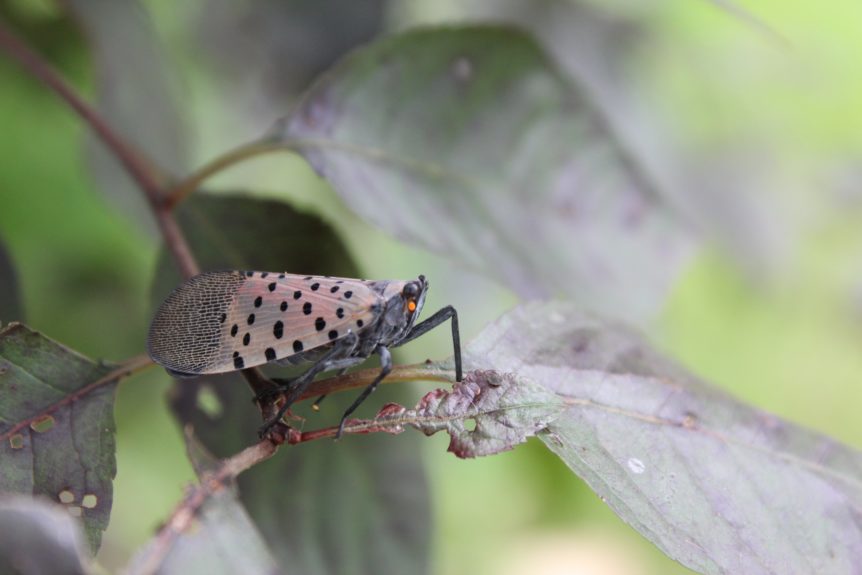Throughout our territory of Harford, Baltimore and Cecil Counties, our crews are swatting away those pesky Spotted Lanternflies, just like you are. These annoying pests have invaded and are here to stay (at least for now). They can’t hurt people or pets directly but they wreak havoc on fruit trees and crops. What can you do to help mitigate their effects?
Spotted Lanternflies Life Cycle
The young Spotted Lanternfly hatches in early spring in a nymph form with spots and six legs that somewhat resemble the pattern of a ladybug. In their adult stage they develop wings with the noticeable red coloration and spots. They usually reach the adult stage in August, before breeding in September and into the fall. They lay egg masses that appear to be a light brown patch of mud or mortar stuck on a tree, deck, siding, or other similar structure.
Unfortunately, these insects don’t have many natural predators. It appears most birds won’t eat them. Praying mantises, wheel bugs and spiders will eat them. Unfortunately, the numbers are too high at this point for those predators to control the insect.
The Tree of Heaven is the Host Tree for the Spotted Lanternfly
The Spotted Lanternfly prefers to breed on the Tree of Heaven, though they will use alternative trees too, such as oaks and willows. The Tree of Heaven is an invasive species that is often found on the side of the road. They are easily mistaken for black walnuts and staghorn sumacs. If you want to reduce breeding locations, you can remove the Tree of Heavens found on your property.
Damage from Spotted Lanternflies
These insects are harmful to crops and fruit trees including apple, cherry, peach, plum, grapes, but the whole list includes maples, oaks, birch, tulip poplar, black gum, sycamore, hickory, dogwood and more. They have piercing mouthparts that penetrate tree bark where they suck the sap from the plants. They emit a sticky substance called honeydew which is left on the leaves, fruits and stems. It creates an environment for growth of sooty mold, reduces photosynthesis, and attracts additional pests to the plant or tree.
The damage to the tree can result in a stressed state that may droop leaves, wilt, ooze sap and can ultimately kill a weakened or diseased tree. These trees can be supported with additional watering, mulching and fertilizer (consult an expert if in question).
How to Reduce the Impacts of Spotted Lanternfly
Scrape and destroy any egg masses you find on a tree or structure. They can be dropped in a bucket of alcohol or thoroughly crushed. Note the risk in transferring live eggs elsewhere if they are not fully killed. If you are willing and able, remove Trees of Heaven found on your property, which is their favorite tree for reproduction. Insecticides can also be used on your trees, but they must be applied with caution and timing according to EPA Standards. You can manually collect these insects on the trees with a soda bottle with the top cut out and drop them into a bucket of soapy water.
Unfortunately, it appears that the Spotted Lanternfly will be around for a while until bigger solutions are developed to reduce the population.
Chesapeake Landscapes provides full-service landscape and hardscape design and installation throughout Harford, Baltimore, and Cecil Counties. Schedule an appointment with a designer here!
Secure your position on the calendar so you don’t have to wait!

